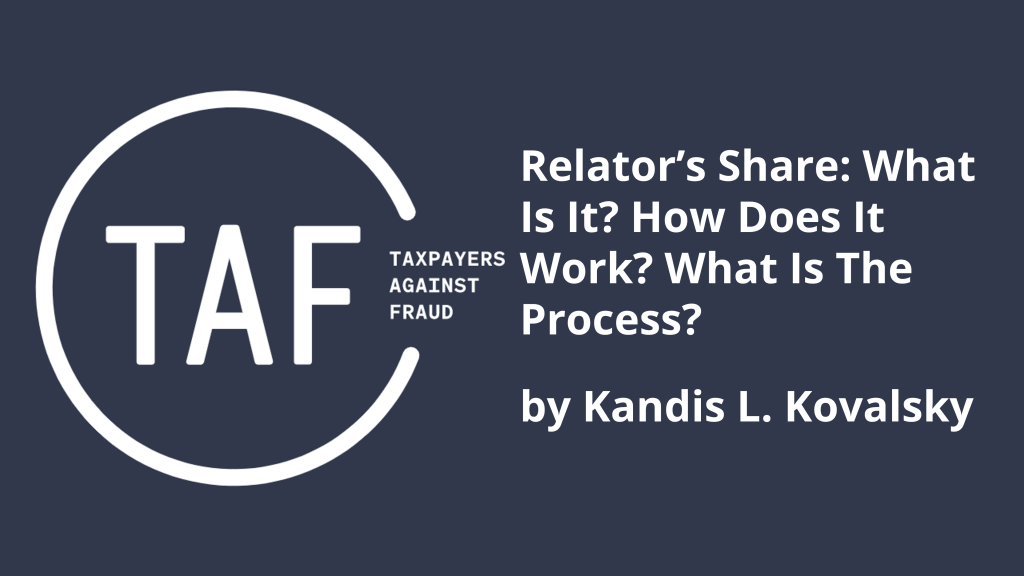The TAF Coalition, a public interest, non-profit organization dedicated to defending and empowering whistleblowers who expose fraud on the government and the financial markets, recently published a primer on understanding Touhy requests by Kang Haggerty member Kandis Kovalsky. Continue reading ›
Archives
The Legal Intelligencer: Emerging ‘Securities’ Litigation in Cryptocurrency
Courts will likely be grappling with questions regarding cryptocurrency for years to come—with the results from the suits against Binance and Coinbase potentially serving as guiding precedent in answering those questions.
In the July 6, 2023 Edition of The Legal Intelligencer, Edward T. Kang and Kandis L. Kovalsky co-authored, “Emerging ‘Securities’ Litigation in Cryptocurrency.” Continue reading ›
Supreme Court Rules Unanimously in Favor of Relators in Monumental Decision on Scienter
On June 1, 2023, the United States Supreme Court issued a unanimous opinion (authored by Justice Clarence Thomas), providing a long-awaited answer to the question of whether, under the Federal Claims Act (“FCA”), a defendant “knowingly” submits a false claim by reporting its retail cash price as its “usual and customary price” rather than the lower and more-common price offered through discount programs. The Seventh Circuit twice held that such reporting is not a “knowingly” false claim under the FCA because “a reasonable person” could reach a similar interpretation of “usual and customary price.” United States v. Supervalu Inc., 9 F.4th 455 (7th Cir. 2021); United States ex rel. Proctor v. Safeway, Inc., 30 F.4th 649 (7th Cir. 2022). The Supreme Court vacated the Seventh Circuit’s judgments and ruled that the FCA scienter requirement refers to a defendant’s knowledge and subjective beliefs – not to what an objectively reasonable person may have known or believed. United States ex rel. Shutte v. SuperValu Inc., 598 U.S. (2023) The Court also determined that facially ambiguous language is not a sufficient reason to prohibit a finding that a defendant knew its claims were false. Continue reading ›
Legal Intelligencer: When Is Knowing ‘Knowing’ in FCA Cases? High Court Examines Two Cases
The Supreme Court is taking up two U.S. Court of Appeals for the Seventh Circuit cases where rulings shielded both food-and-pharmacy chains from FCA liability for alleged improper billing involving prescription drugs. If the high court sides with the Seventh Circuit, the impending result could mean an exponential loss of taxpayer money.
In the April 13, 2023 edition of The Legal Intelligencer, Edward T. Kang and Kandis Kovalsky wrote “When Is Knowing ‘Knowing’ in FCA Cases? High Court Examines Two Cases“
Legal Intelligencer: Fighting Fraud in Health Care Through the False Claims Act in the Third Circuit
The Third Circuit has adopted a more plaintiff/relator friendly interpretation while the Eighth Circuit has reached the opposite conclusion. Until the U.S. Supreme Court settles the circuit split, choice of venue is key for those bringing claims under the Anti-Kickback statute.
In the December 1, 2022 edition of The Legal Intelligencer, Edward T. Kang and Kandis Kovalsky wrote “Fighting Fraud in Health Care Through the False Claims Act in the Third Circuit” Continue reading ›
Taxpayers Against Fraud: Relator’s Share: What Is It? How Does It Work? What Is The Process?
 In the October 2022 Edition of Taxpayers Against Fraud (TAF) Newsletter, Kandis Kovalsky wrote “Relator’s Share: What Is It? How Does It Work? What Is The Process?”
In the October 2022 Edition of Taxpayers Against Fraud (TAF) Newsletter, Kandis Kovalsky wrote “Relator’s Share: What Is It? How Does It Work? What Is The Process?”
To incentivize whistleblowers to assist the Government in combatting fraud on the Government and its taxpayers, the False Claims Act, 31 U.S.C. § 3729, et seq. (the “FCA”) ensures that a whistleblower under the FCA (referred to as a “Relator”) receives at least 15 percent of the proceeds recovered by the Government in any action filed under the FCA by a Relator (referred to as a “qui tam” action). A Relator receives 15 percent of the proceeds of an FCA action just by causing a complaint to be filed; 15 percent is the minimum. Continue reading ›
Law Practice Today: Zoom Court Appearances: Rising to the Occasion While Seated

In the April 2021 Young Lawyers Issue of Law Practice Today, Kandis Kovalsky wrote “Zoom Court Appearances: Rising to the Occasion While Seated”
On March 13, 2020, a national emergency was declared in the United States as a result of the COVID-19 pandemic. Instantly, courts across the country were shuttered. Many courts, particularly the federal courts, quickly rallied and embraced Zoom as a means to continue to hold hearings and move the many criminal and civil cases on their dockets. Some lawyers reveled in the courts’ embracement of Zoom, as the legal profession is often criticized as being somewhat of a dinosaur. Others were initially less excited about having to use a webcam and embrace modern technology, and while appearing in court, no less. Indeed, some lawyers even exclaimed that using Zoom (e.g., the technology) is more stressful than participating in the hearing itself. Continue reading ›
Legal Intelligencer: Five Years After ‘Daimler’: It’s All in the Specifics
In the January 2, 2020 edition of The Legal Intelligencer Edward T. Kang and Kandis L. Kovalsky co-authored “Five Years After ‘Daimler’: It’s All in the Specifics.”
Major cases such as 2014’s Daimler AG v. Bauman have refined the requirements for, and in many senses restricted, the establishment of personal jurisdiction over parties. This goes for both the exercise of general and specific jurisdiction.
The exercise of personal jurisdiction is fundamentally connected with the constitutional right to due process. The question of whether it is fair and procedurally proper to subject a person to a forum state’s jurisdiction has been refined by the U.S. Supreme Court multiple times in the past decades, and especially in recent years. Major cases such as 2014’s Daimler AG v. Bauman have refined the requirements for, and in many senses restricted, the establishment of personal jurisdiction over parties. This goes for both the exercise of general and specific jurisdiction.
The basic notion behind general jurisdiction is that the defendant has to have, to quote directly from the well-known International Shoe v. State of Washington opinion, “continuous and systematic” affiliations with the forum state to reasonably expect that state’s jurisdiction over her, no matter the issue at stake (as opposed to specific jurisdiction, where the issue in question is the only reason one could expect to land up in another state’s court). But, what does “continuous and systematic” mean? Continue reading ›
Legal Intelligencer: What I Wish I Knew When I Began My Law Career
By the YL Editorial Board
Legal Intelligencer: Psst…Your Bias Is Showing – a Response from YL Editorial Board
By the YL Editorial Board
 Kang Haggerty News
Kang Haggerty News

